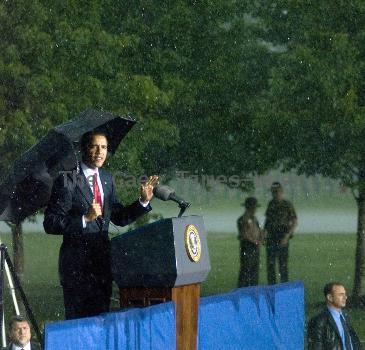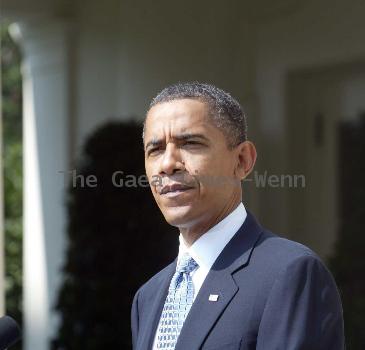Study: Number of illegal immigrants in US drops to 11.1 million, first decline in 20 years
By Hope Yen, APWednesday, September 1, 2010
Number of illegal immigrants in US now declining
WASHINGTON — The number of illegal immigrants living in the U.S. has dropped for the first time in two decades — decreasing by 8 percent since 2007, a new study finds. The reasons range from the sour economy to Mexican violence and increased U.S. enforcement that has made it harder to sneak across the border.
Much of the decline comes from a sharp drop-off in illegal immigrants from the Caribbean, Central America and South America attempting to cross the southern border of the U.S., according to the Pew Hispanic Center, which based its report on an analysis of 2009 census data.
The findings come amid bitter debate over Arizona’s strict new immigration law, which was passed earlier this year but is on hold for now as it is challenged in federal court. The Obama administration contends the state law usurps federal authority and promotes racial profiling, while Arizona leaders say states are justified to step in if federal enforcement falls substantially short.
The study released Wednesday estimates that 11.1 million illegal immigrants lived in the U.S. in 2009. That represents a decrease of roughly 1 million, or 8 percent, from a peak of 12 million in 2007.
The study puts the number of illegal immigrants down to about where it was in 2005. They still make up roughly 4 percent of the U.S. population.
The Homeland Security Department’s own estimate of illegal immigrants is slightly lower, at 10.8 million. The government uses a different census survey that makes some year-to-year comparisons difficult.
An increase in unauthorized immigrants leaving the U.S., by deportation or for economic reasons, may have played a factor in the falling number.
In recent years, U.S. Immigration and Customs Enforcement has deported an increasing number of illegal immigrants, reaching a high last year of more than 389,000 people, according to government figures.
States in the Southeast and Southwest saw some of the biggest declines in the number of illegal immigrants from 2008 to 2009, including Florida, Nevada and Virginia. Arizona saw a decrease, but it was too small to be statistically significant.
It’s hard to figure out how much of the decline to attribute to the bad economy and how much to federal immigration enforcement, said Jeffrey Passel, a senior demographer at Pew who co-wrote the analysis.
“They’re certainly acting together,” he said. Passel said illegal immigrants now find it more expensive and dangerous to cross into the U.S. and also have less incentive to do so given the languishing job market in construction and other low-wage industries.
The Pew analysis found the sharpest decline — 22 percent — among illegal immigrants from Latin American countries other than Mexico. This may reflect a lesser-known aspect of the immigration debate that broke into the news again last week when the bodies of 72 Central and South American migrants were found in a cartel stronghold in northern Mexico: Thousands of non-Mexicans go missing on their way to the United States, falling victim to demands that they pay impossible ransoms to criminal gangs that control access to the U.S. border.
“While people are arguing the government is not stopping illegal immigration, our data suggests the flow of undocumented immigrants sneaking into the country has dropped dramatically,” Passel said.
The estimates by Pew will add to the political back-and-forth on immigration reform.
President Barack Obama, who is challenging the Arizona law, has pledged to push an overhaul of federal immigration law but has declined to set a timeline.
After the passage of Arizona’s immigration law, more than a dozen states were considering similar legislation or have issued legal opinions aimed at strengthening immigration enforcement. They include Florida, Virginia, South Carolina and Utah.
Boosted by immigration and high numbers of births among Latinos, minorities now make up roughly half the children born in the U.S., part of a historic trend in which they are projected to become the majority of Americans by mid-century. Roughly one in four counties currently have more minority children than white children or are nearing that point.
Still, the Census Bureau has made clear that projected minority growth — particularly among Hispanics — could change substantially depending on immigration policies and the economy.
Other Pew findings:
—The states with the highest percentage of illegal immigrants were California (6.9 percent), Nevada (6.8 percent), Texas (6.5 percent) and Arizona (5.8 percent). The numbers are expected to play an important factor in whether those states lose or gain fewer U.S. House seats than expected after the 2010 census.
—Illegal immigrants make up about 28 percent of the foreign-born population in the U.S., down from 31 percent in 2007.
—The unemployment rate for illegal immigrants in March 2009 was 10.4 percent — higher than that of U.S.-born workers or legal immigrants, who had unemployment of 9.2 percent and 9.1 percent, respectively.
New York Mayor Michael Bloomberg, an outspoken advocate of welcoming more immigrants to the U.S., said he was not surprised by the study’s findings.
“It exemplifies what I’ve been saying all along,” Bloomberg told reporters. “Not totally, but generally, people come here from around the world — whether they come here legally or illegally — to work, to build a better life for themselves and for their families. And when our economy is down, it’s just tougher to get a job.”
The Pew analysis is based on census data through March 2009. Because the Census Bureau does not ask people about their immigration status, the estimate on illegal immigrants is derived largely by subtracting the estimated legal immigrant population from the total foreign-born population. It is a method that has been used by the government and Pew for many years and is generally accepted.
Associated Press writer Sara Kugler Frazier in New York contributed to this report.
Online:
Pew Hispanic Center: pewhispanic.org/
Tags: 2010 United States Census, Arizona, Barack Obama, Censuses, Demographics, Events, Hispanics, Immigration Policy, Labor Economy, Migration Rates, New York, New York City, North America, United States, United States Census, Washington

















